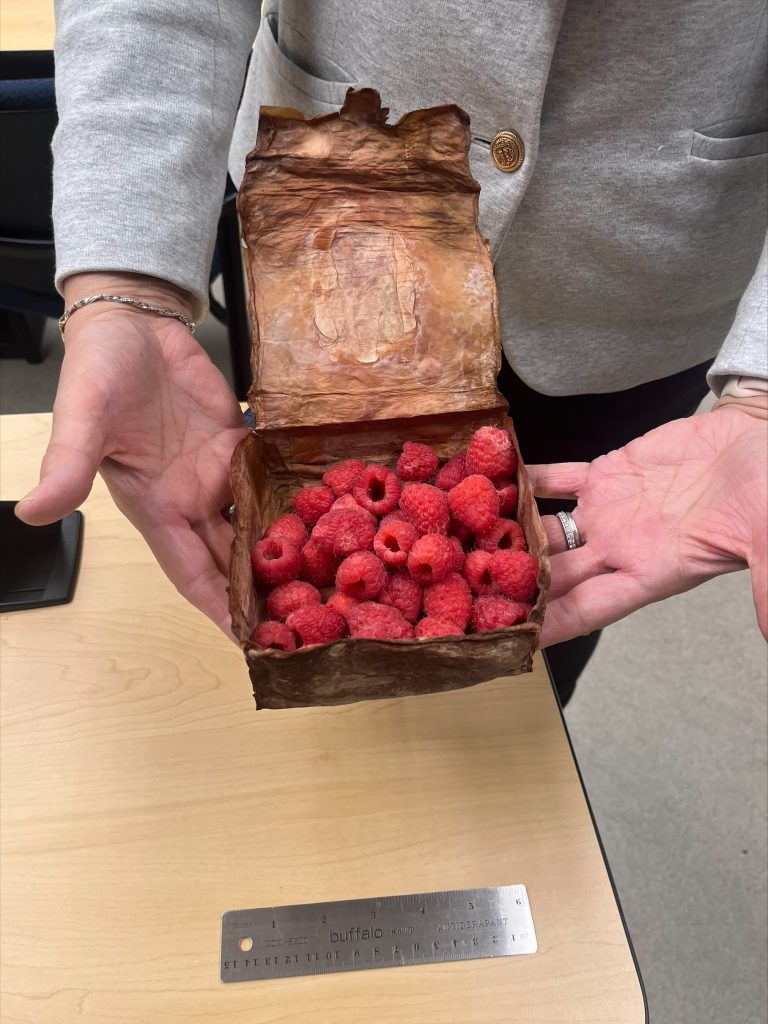
2022 iGem team develops a compostable food packaging alternative
By Nazeefa Ahmed, January 18 2022—
As we are deep into the 21st century, it is interesting to reflect on what we will be remembered for. When future scientists unearth our fossilized bodies and analyze them under a microscope, what will they learn about the way we used to live?
An alarming report published in Environment International points to our legacy. Eighty per cent of the people tested were found to have micro and nanoplastics in their blood and possibly embedded in their organs. Scientists are still researching the impact this plastic debris has on human cells, but have determined that we do consume enough to cause harm through our food, water, and even the surrounding air.
The University of Calgary’s 2022 iGem team, developed Cellucoat, a cellulose-based food packaging that is biodegradable, food-safe, and plastic free. They hope that their eco-friendly alternative will be adopted by the public for its effective physical properties.
In an interview with the Gauntlet, fourth-year biomedical sciences student and wet lab scientist Danielle Korsrud spoke about her team’s development, intention, and future goals of the project.
“Our goal is to replace plastic packaging for fruits and vegetables,” said Korsrud. “We knew there’s stuff like seaweed packaging that’s biodegradable but, like a lot of alternatives, where they kind of excel in one area we found they would lack in another area. For example, they can be really flexible but don’t absorb a lot of water, which would leave the food soggy.”

Korsrud describes how Cellucoat differs from other biodegradable packaging, emphasizing the economic considerations in the design of the cellulose base.
“We thought cellulose would be a great option for packaging, but we wanted to make it better. We wanted to give it different qualities to kind of give us a competitive advantage,” said Korsrud. “To decrease cost, one of the things we did is we decided to replace the glucose to grow our bacteria in and use recycled free waste instead. We actually extracted nutrients from orange juice, and we created our own sustainable and recyclable growth media. This significantly brought down the cost of production by about 60 per cent.”
If Cellucoat is able to continue mass production, the team also considered how a bioreactor could streamline production. Cellucoat could then realistically compete among plastic alternatives.
Korsrud also touches on the social aspects of implementing Cellucoat, emphasizing the importance of considering public opinion and hesitancy with the idea of bacteria being used to package food.
“Communication with the public is something that we are really pushing for, and something that we looked into when we reached out to industry contacts,” said Korsrud. “Since we are modifying bacteria, there can be a negative perception but it’s really important to explain how our purifying process works. We’re getting rid of all the bacteria so it is completely safe. Bacteria cellulose also itself is edible, and it’s food safe, and the proteins we’re putting into it are food safe. So in theory everything could be consumed, although that is not our intention.”
Those interested in learning more about Cellucoat are encouraged to visit their website.
